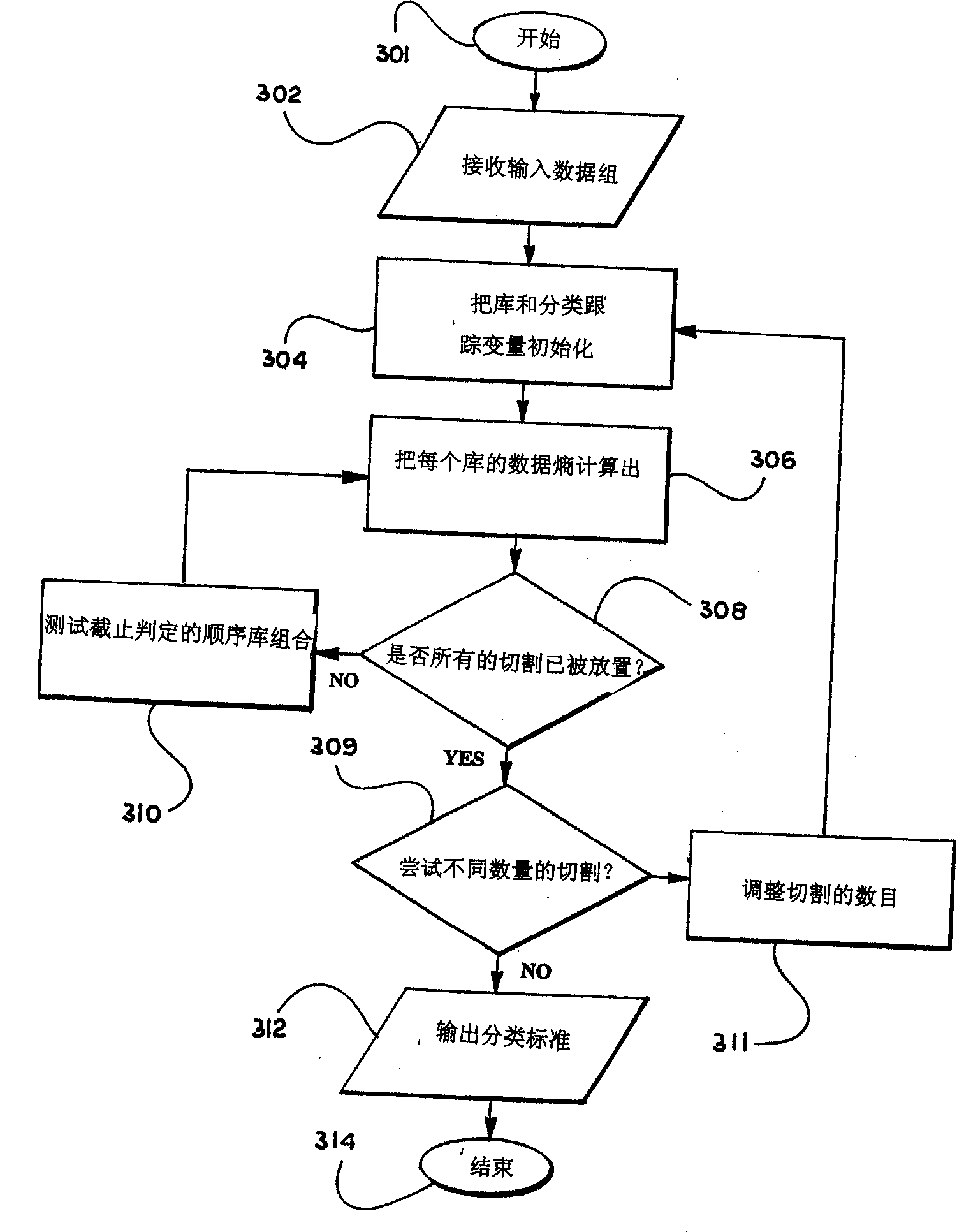Enhancing knowledge discovery from multiple data sets using multiple support vector machines
A support vector machine and knowledge discovery technology, applied in the field of optimization of input and output data, can solve problems affecting the quality of approximation methods, fuzzy optimal solutions, limitations, etc.
- Summary
- Abstract
- Description
- Claims
- Application Information
AI Technical Summary
Problems solved by technology
Method used
Image
Examples
Embodiment Construction
[0033] The present invention provides an improved method for discovering knowledge from data using learning machines. While some examples of learning machines exist and advances in this field are expected, the exemplary embodiments of the present invention focus on support vector machines. As is known in the art, learning machines include algorithms that can be trained for normalization using data of known outcome. The trained learning machine algorithm can then be applied in the case of unknown outcomes for prediction. For example, a learning machine can be trained to recognize patterns in data, estimate regressions in data, or estimate probability densities within data. Learning machines can be trained to solve a wide variety of problems known to those of ordinary skill in the art. Optionally, any trained learning machine can be tested on the test data to ensure that its output is confirmed to be within an acceptable error bound. Once a learning machine is trained and tes...
PUM
 Login to View More
Login to View More Abstract
Description
Claims
Application Information
 Login to View More
Login to View More - Generate Ideas
- Intellectual Property
- Life Sciences
- Materials
- Tech Scout
- Unparalleled Data Quality
- Higher Quality Content
- 60% Fewer Hallucinations
Browse by: Latest US Patents, China's latest patents, Technical Efficacy Thesaurus, Application Domain, Technology Topic, Popular Technical Reports.
© 2025 PatSnap. All rights reserved.Legal|Privacy policy|Modern Slavery Act Transparency Statement|Sitemap|About US| Contact US: help@patsnap.com



